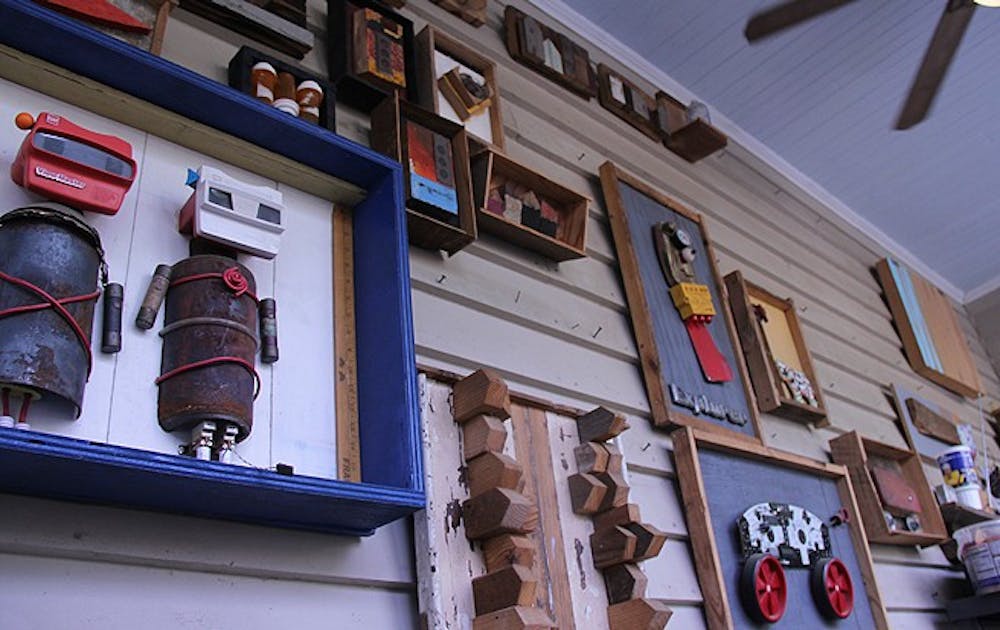Not far from the Duke Arts Annex, on Burch Avenue, there is a house that is so covered in sculptures, it’s practically a museum. The pieces are made of wood, metal gears, old prescription bottles and the odd View-Master—a camera-like toy that displays images through the viewfinder. The house’s wrap-around porch doubles as an outdoor studio. Stacked next to a workbench are drawers filled with nuts and bolts and buckets overflowing with scraps of old wood and miscellaneous junk—an old xylophone, a small television. Behind the work area, a stained glass window hangs from the roof.
The house is owned by Wendy Woods and Stacey Poston, the artist behind it all. Poston classifies her pieces as “bricolage,” which she explains is “[the process of] putting things together that didn’t initially go together.”
Many of the pieces are nonmechanical robots—“bots” as she calls them—while others are abstract.
“There’s no unused piece of junk,” says Woods, and Poston laughs.
As she shows her art, Poston interrupts herself to pick up scraps and fit them together, visualizing future pieces. She picks up the portable television and says it would make a great head for a “bot,” and then says a nearby chainsaw could be a good body.
Poston and Woods have lived in their eye-catching abode for the past eight years, and in the neighborhood for 15. Woods, like Poston, is a creative type. She is the co-owner and head chef at Nosh, where she has installed several of Poston’s pieces, and she makes her own metal flowers that the couple plants in their yard.
“It’s nice to have a creative person in your life because you can appreciate that creative process,” Poston says.
Nosh diners have started ordering customized works from Poston, who stresses the importance of making her art affordable and accessible. Woods agrees, noting that “art helps people talk to each other.”
The artist’s experimentation with bricolage began five years ago, when a friend of hers crafted one work of art every day for a year. Poston began making her own one-a-day pieces with parts she collected at the Scrap Exchange in Durham. After five years of “poking around with it” and a few Durham Arts Council classes, art has become a central part of Poston’s life. When she is not working the city of Durham, creating access points for people with disabilities, Poston scavenges for materials at junkyards and renovation sites. Occasionally she gets help from a secret admirer, who leaves scraps on her outdoor workbench.
Poston’s art is inspired by North Carolinian metalwork artist Vollis Simpson, who The New York Times deemed a “junkyard poet.” Last year, The Wall Street Journal featured Poston’s work by publishing a photograph of a sign she painted to protest Amendment 1.
The question of national publicity aside, Poston is carving out a place for her art, right in her own front yard.
Correction: an original version of this article said the house was on Burch Street. The house is actually on Burch Avenue. The Chronicle regrets the error.

